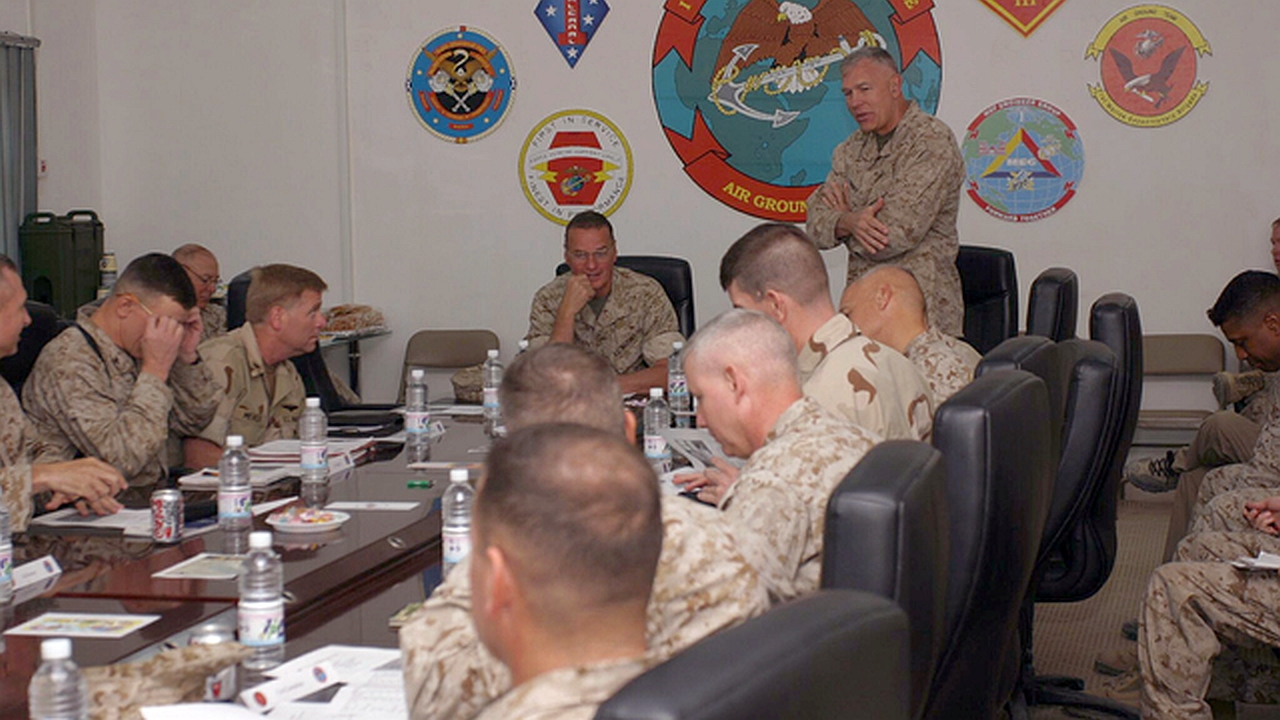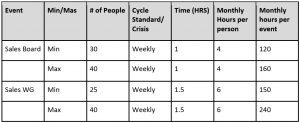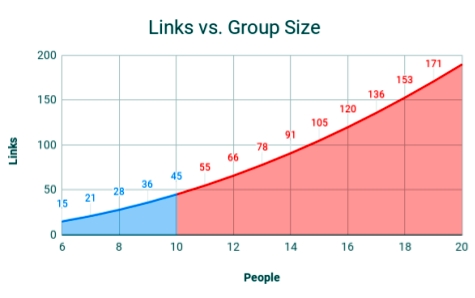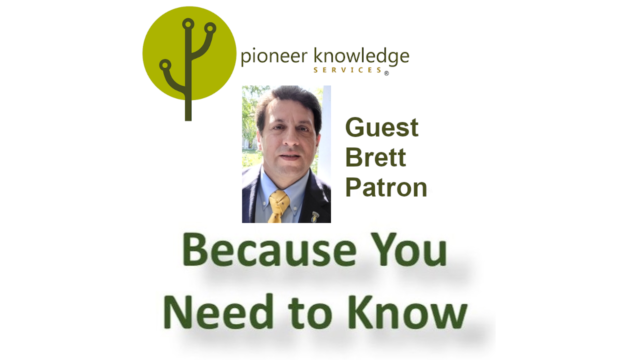
Organization Management Rhythm (part 6.8): Tools – Cost Per Event
This article is part 6.8 of a series of articles on Organization Management Rhythm.
This may not seem as important as the rest of the Organization Management Rhythm but there are different thoughts and standards to apply here. The cost of the meeting is fairly straightforward. Based on the meeting, this portion of the analysis shows exactly what the meeting is costing in terms of just hours invested on the event. This is looking at the first level. For this we are using a board which meets weekly and a working group (WG) that meets weekly (Table 1).

This analysis shows the amount of money that a meeting is costing the organization in terms of relevant and irrelevant people attending meetings. What it is not showing you is the true cost of the two meetings. What is needed is to show exactly how many people it would take to work the event if doing it full time. 1880 hours per year equates to 1 yearly full-time employee. 1880/12-156.67 hours per month = 1 monthly full time employee. Table 2 shows the min/max hours of the board and the working group together.

It is part of the study of the team scaling fallacy. Which means that in layman’s terms, the more people that are thrown at a task the quicker it will be done. There are diminishing returns after a certain point. The more connected a team is the more chance that the effectiveness and productivity will decrease1
A six-person group (the minimum group size fed under the Two Pizza Rule) has 15 links. The maximum group size under the Two Pizza Rule, ten people, bring the number of links up to 45. 45 is not a lot of links, but that’s to be expected when limiting group size in accordance with the Two Pizza Rule. However, the trend starts to snowball quickly. A group of 15 people has 105 links and a group of 20 has 190. Even at just ten people, there are still an average of 45 links; 45 opportunities for social and political connections to drag down the effectiveness and productivity of a meeting.

Limiting the people at the meeting to who just needs to be there can increase the productivity of the meeting. Aim to have no more than ten people in any meeting. Anything past that significantly increases the number of links present. Eight people to ten is a gain of just seventeen links where six to eight is only 13.
Next part (part 7.1): Analysis – Phase 1: Identify and Document the Existing Organization Calendar Rhythm.
Acknowledgements: Thank you to Tomi Antill, Keith Davis, Elise Keith from Lucid Meetings, JFHQ-C Leadership, and Kendra Albright from Kent State University, without whose support this series would not have been possible.
Header image source: U.S. National Archives, Public Domain.
References:
- Peinhardt, J. (2019, January 6). Amazon’s Two Pizza Rule: One Simple Rule for Maximizing Meeting Effectiveness. Directorpoint. https://landing.directorpoint.com/blog/amazon-two-pizza-rule/. ↩
- Peinhardt, J. (2019, January 6). Amazon’s Two Pizza Rule: One Simple Rule for Maximizing Meeting Effectiveness. Directorpoint. https://landing.directorpoint.com/blog/amazon-two-pizza-rule/. ↩
- Staats, B. R., Milkman, K. L., & Fox, C. R. (2012). The team scaling fallacy: Underestimating the declining efficiency of larger teams. Organizational Behavior and Human Decision Processes, 118(2), 132-142. https://www.sciencedirect.com/science/article/abs/pii/S0749597812000374. ↩





